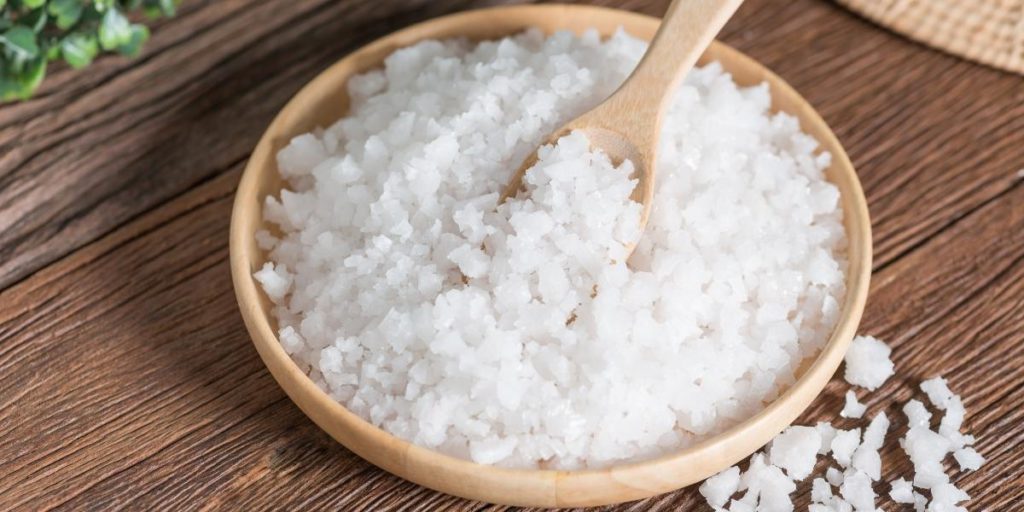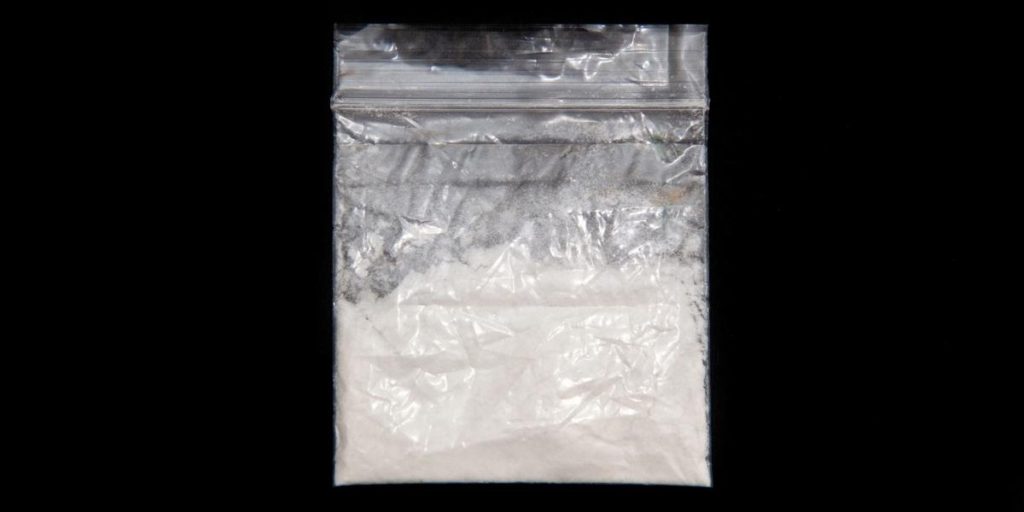Bath Salts Drug
Synthetic Cathinones

Synthetic cathinones, the artificial psychoactive ingredient in bath salt drugs, are dangerous and addictive. The designer drug is sold as a cheap and legal alternative to other illicit drugs like MDMA, cocaine, and meth.
Despite having pleasant-sounding street names on the drug market like Ivory Wave, Vanilla Sky, and Cloud 9, bath salt drugs have nothing in common with the Epsom salts people add to their baths to relax.
Bath salts, the drug, can be bought over the counter labeled as other products and have a high potential for abuse and dangerous side effects.
The Drug Enforcement Agency (DEA) and the United States Department of Health and Human Services (HHS) placed an emergency ban on some of the most common ingredients found in bath salts in 2011. The ban became permanent throughout the United States in 2012.
Unfortunately, manufacturers frequently invent and change the chemicals found in synthetic cathinones to avoid being detected by law enforcement.
What Are Bath Salts?
Bath salts are a designer drug made from synthetic cathinones, classified as a new psychoactive substance (NPS), and used as a recreational drug. The drug is made into a powder that can be swallowed, smoked, snorted, or injected.
Are Bath Salt Drugs the Same as Bath Salts?
Of course, bath salts are nothing like Epsom salts that many people use to relax in a bath. The name is just a workaround for the product to be sold over the counter and somewhat legally.
Actual bath salts, or Epsom salts, are dissolved in baths and foot soaks to help people relax. They are sold in large jars or bags with labels that specify their intended use and instructions.
Epsom salts are magnesium and sulfates with added scents and colors to make baths more pleasant. They’re chunky and thick like kosher salt and easily dissolve in water.

What Are Synthetic Cathinones?
Synthetic cathinones are artificially made by a naturally occurring chemical known as a cathinone.
Cathinones are the primary psychoactive ingredients in the khat plant (Catha edulis). The flowering plant is native to Africa and the Arabian Peninsula.
The khat plant’s stimulating effects have been known for centuries. However, in 1970, the cathinone was specifically isolated and extracted from the plant. Thus, leading to creating synthetic cathinones.
Synthetic cathinones are chemically similar to amphetamines and cathinones in the khat plant but are much more potent, dangerous, and unpredictable.
What Do Bath Salts Look Like?
Bath salts are white or brown powders that come in small plastic or foil packages labeled “not for human consumption.” The powder ranges from fine like baby powder to tiny crystals like table salt.
Common Street Names
Bath salts are sometimes sold as plant food, jewelry cleaner, or phone screen cleaner in head shops, gas stations, convenience stores, and online.
According to the National Institutes of Health and Human Services (HHS), bath salts are most commonly bought online.
These products are labeled “not for human consumption,” which doesn’t stop people from snorting, swallowing, injecting, or smoking this substance to get high.
People and companies use many different names to sell bath salts to avoid legal ramifications. The most common street names and brand names for bath salts include:
- Flakka
- Ivory Wave
- Vanilla Sky
- White Lightning
- Stardust
- Cloud Nine
- Purple Wave
- Pure Ivory
- Meow Meow
- Ocean Burst
- Lunar Wave
- Alpha PVP

What Kind of Drug Is Bath Salts?
Bath salts are central nervous stimulators made from synthetic cathinones that give a high similar to more controlled substances like amphetamines, cocaine, and MDMA but are on average ten times stronger.
Bath salts are an illegal drug and are considered a new psychoactive substance by the European Monitoring Centre for Drugs and Drug Addiction (EMCDDA), which monitors the dangers of new and threatening synthetic drugs that the United Nations (UN) haven’t officially recognized yet.
Synthetic cathinones bind to the same receptors in the brain as other stimulants but don’t dissolve or remove themselves once the body has eliminated the rest of the drug. The lingering nature of this drug gives it a high potential for abuse and addiction.
What Are Bath Salts the Drug Made Of?
Hundreds of different chemicals and ingredients make up bath salts, but the most common ingredients are 3,4-methylenedioxypyrovalerone (MDPV), mephedrone, and methylone. Additionally, it is mixed with other substances to make it easier to ingest.
Methylone is a dangerous synthetic cathinone increasingly found in multiple drugs claiming to be other substances. It is sometimes substituted for MDMA and sold as molly, the pure crystal form of MDMA.
On their own or in combination with each other, those three ingredients cause bath salts’ intense physical and psychological effects.
Manufacturers often add “cutting agents” to make the packets seem thicker and fuller. Various tests on bath salts have shown everything from baby powder to lidocaine mixed with synthetic cathinones.
The other ingredients are constantly changing to avoid detection by law enforcement.
Are Bath Salts Addictive?
Bath salts are incredibly addictive, and synthetic cathinone users are highly likely to develop a substance abuse disorder.
The National Institute on Drug Abuse (NIDA) reported that bath salt users claim the drugs give them intense and uncontrollable urges to use the drug repeatedly.
In a study conducted by the National Institutes of Health (NIH), 44.3% of users described synthetic cathinones as “at least as addictive as cocaine.”
Other users described strong urges for continued use and experiencing psychological and physical withdrawal symptoms.

Bath Salts Drug Effects
The effects of bath salts will vary because every batch is different and can last from three to eight hours.
Users take bath salts because they want a rush of euphoria and believe it can increase your sex drive and lower inhibitions. Still, more often than not, the effects of synthetic cathinones are unpleasant and dangerous.
The most commonly reported side effects include:
- Paranoia
- Hallucinations
- Extreme aggression
- Violent behavior
- Anxiety
- Insomnia
- Shaking
- Panic attacks
- Sweating
- Insensitivity to pain
- Intrusive thoughts and urges
- Suicidal thoughts
People on Bath Salts
People on bath salts can feel its effects within 15 minutes of consuming the drug. Medical professionals still are not aware of the long-term effects.
One of the most concerning bath salts effects is the dangerous psychological consequences users experience, resulting in violent and harmful behaviors.
Many people high on bath salts have committed self-mutilation and attacked others while experiencing hallucinations and paranoia.
Famously, a Florida man suspected to be high on bath salts attacked another man and tried to eat his face. Other cases include a man who killed his five-year-old son, then shot his wife and himself, and a 21-year-old who committed suicide after experiencing extreme paranoia. Autopsies revealed all the adults had MDPV in their systems.
The Substance Abuse and Mental Health Services Administration (SAMHSA) reported in 2011 that bath salts were involved in over 20,000 visits to emergency rooms and a drastic increase of calls to poison control.

Health Risks
Short-term and long-term abuse of bath salts comes with many health risks because synthetic cathinones interact with the brain and the central nervous system.
Bath salts cause physical and mental health symptoms that are dangerous for users with adverse effects including:
- High blood pressure
- Increased heart rate
- Increased body temperature
- Chest pain
- Vomiting
- Sweating
- Hallucinations
- Panic attacks
- Psychotic episodes
- Paranoia
- Kidney failure
- Breakdowns in muscle tissue
- Stroke
- Heart attacks
- Death
Taking bath salts with other substances, especially other uppers, dramatically increases the risk of adverse effects and overdose. If you feel your health is in danger, seek medical advice immediately.
Bath Salts Drug Abuse Treatment
As of right now, there are no medication-based treatment options for bath salt addiction or synthetic cathinone abuse.
Although, the NIDA recommends behavioral therapies to treat the roots of bath salt addiction, which may be other existing addictions and mental health conditions.
Thus, at Northridge Addiction Treatment Center, we utilize evidence-based treatments and therapies such as cognitive-behavioral therapy, dialectical behavior therapy, relapse prevention, and many more to give you the skills to take charge of your recovery and life after you walk out our doors.
We also integrate diagnosing co-occurring disorders to understand and treat all the underlying causes of addiction.
NATC’s expert and compassionate medical staff and substance abuse counselors are licensed, certified, and highly trained to help you treat all aspects of your rehabilitation and help you along your journey to life-long recovery.
Our residential treatment facility in Southern California gives you comfort, privacy, and support while learning to overcome addiction and focus on your health and healing.
Contact us today to start a new life free from addiction.
Find Meaningful Recovery
Our caring and compassionate specialists are eager to help you comfortably navigate this journey to recovery. Our individualized treatment plan, programs, and therapies may be a perfect match for you or your loved one. Let us assist you in living the happy life you deserve. It starts with a phone call.




